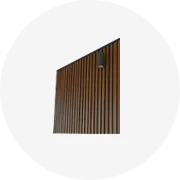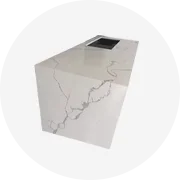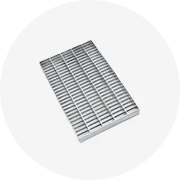Types of Double Heating Systems
A double heating system is a dual-source heating solution designed to provide enhanced thermal efficiency and redundancy by combining two distinct heat generation methods. These systems are particularly effective in environments where maintaining consistent indoor temperatures is critical, such as large residential buildings, commercial spaces, or regions with harsh winters.
By integrating two different heating mechanisms, double heating systems offer greater flexibility, improved energy efficiency, and the ability to switch between sources depending on availability, cost, or performance requirements.
Boiler and Heater Combination
This system combines a traditional boiler with an auxiliary heater, typically electric or gas-powered. The boiler serves as the primary source, circulating hot water through radiators to provide steady, ambient heating throughout the building. The secondary heater—often wall-mounted or portable—acts as a supplemental unit that directly warms the air in specific rooms or zones when additional heat is needed.
Advantages
- Uniform heating across large areas
- Reliable for extended periods without electricity (if boiler uses gas)
- Efficient for base-load heating
- Can maintain stable indoor climate even in extreme cold
Limitations
- Higher installation and maintenance costs
- Requires professional servicing
- Slower response time compared to direct heaters
Best for: Residential homes, office buildings, and multi-room facilities requiring stable, long-term heating.
Dual-Heater System (Electric + Gas or Two Electric Units)
This configuration utilizes two independent heaters—commonly one electric and one gas-powered—to provide flexible and adaptable heating solutions. Both units can operate simultaneously during peak demand or independently when only moderate warmth is required. This setup is especially useful in areas with inconsistent power supply or fluctuating fuel prices.
Advantages
- Highly adaptable to changing conditions
- Quick temperature adjustments
- Energy-efficient operation based on usage
- Provides backup if one system fails
Limitations
- Potential for uneven heating distribution
- Increased complexity in control management
- Limited effectiveness in very large spaces
Best for: Smaller homes, apartments, and locations prone to power outages or fuel shortages.
| Type | Primary Heat Source | Secondary Heat Source | Best Application | Energy Efficiency |
|---|---|---|---|---|
| Boiler and Heater | Boiler (water-based) | Wall or portable heater | Large buildings, consistent heating needs | High |
| Dual-Heater | Electric heater | Gas or second electric heater | Residential use, intermittent heating demands | Moderate to High |
Expert Tip: For optimal performance and safety, ensure both heating components are properly sized for the area they're intended to heat. Over-sized or under-sized units can lead to inefficiencies and increased energy bills.
Safety Note: Always install carbon monoxide detectors if using gas-based heating elements. Regular maintenance is essential to prevent leaks, fire hazards, or inefficient operation.
Specifications and Maintenance of Double Heating Systems
The double heating system has evolved into a critical component in modern vehicle climate control systems, especially for commercial and heavy-duty vehicles. As a business buyer or fleet manager, understanding both the technical specifications and proper maintenance practices is essential to ensure reliable operation, energy efficiency, and long-term cost-effectiveness.
Key Technical Specifications to Consider
When selecting a double heating system for your application, several critical specifications must be evaluated to ensure compatibility with your vehicle and performance requirements:
Heat Output Capacity
Measured in watts (W) or British Thermal Units (BTU), heat output determines the system’s ability to warm the cabin effectively. Most double heating systems range from 2000 to 5000 watts, depending on the size of the vehicle and intended usage conditions.
For example, smaller passenger vans may require around 2000-3000W, while larger trucks or buses operating in cold climates might need systems exceeding 4000W for adequate warmth.
Temperature Control Features
Precise temperature regulation is achieved through integrated thermostats and controllers. Entry-level models typically offer basic manual controls, while advanced systems come equipped with digital displays and programmable settings.
High-end units may also include smart connectivity features such as Bluetooth or Wi-Fi for remote monitoring and adjustment via smartphone apps, enhancing user convenience and comfort management.
Electrical Requirements
Double heating systems generally operate on direct current (DC) power supplies ranging from 12V to 24V, aligning with standard vehicle electrical systems. Some models are designed to handle voltage fluctuations, making them suitable for use in older or industrial vehicles with less stable power sources.
It's important to verify that the vehicle’s battery and alternator can support the additional load without compromising other electrical functions.
Noise Level Performance
A key consideration for driver comfort, noise levels in double heating systems typically fall between 30 to 50 decibels (dB). Modern designs incorporate sound-dampening materials and optimized airflow paths to minimize operational noise.
Units with low-noise fans and vibration-isolated mounting brackets provide a quieter experience, particularly during prolonged use at night or in stationary applications like sleeper cabins.
Physical Dimensions and Installation Fit
Double heating systems come in various sizes to accommodate different vehicle types and installation locations. A common dimension for mid-sized units is approximately 500 mm × 300 mm × 200 mm (L x W x H), with internal heating elements measuring around 200 mm × 150 mm.
Proper fitment is crucial—ensure that the unit can be mounted securely without obstructing access to other components or compromising ventilation pathways.
| Specification | Importance | Selection Tips |
|---|---|---|
| Heat Output (W/BTU) | High | Select based on vehicle size and climate zone; higher output for colder regions |
| Control Type | Medium-High | Digital controls recommended for precision; smart features optional for convenience |
| Power Supply Compatibility | High | Match to vehicle's DC voltage system; consider dual-voltage models if needed |
| Noise Level (dB) | Medium | Choose units rated below 40 dB for quiet operation in sleeping areas |
| Mounting Dimensions | High | Measure installation space carefully before purchasing; allow clearance for wiring and vents |
Recommended Maintenance Practices
To maximize the lifespan and performance of your double heating system, implement a consistent maintenance schedule that includes the following best practices:
Important: Neglecting regular maintenance can significantly shorten the lifespan of your double heating system and compromise driver comfort and safety. Always prioritize scheduled upkeep, especially before the onset of winter months when demand for heating is highest.
How to Choose a Double Heating System
Selecting the right double heating system for your home is an important decision that affects both comfort and utility costs. A double heating system typically combines two different heat sources—such as electric and gas—or provides dual zones for more efficient temperature control. To ensure you make the best choice, consider several key factors including capacity, efficiency, installation, budget, and safety.
Heating Capacity
The heating capacity of your double heating system should match the size of your living space and its insulation level. An undersized unit will struggle to maintain warmth, while an oversized one may waste energy and cause temperature fluctuations.
- Calculate the square footage of the area to be heated
- Assess insulation quality (walls, windows, attic)
- Consider climate conditions in your region
Tip: Use the British Thermal Unit (BTU) formula: 20 BTUs per square foot is a general guideline for moderate climates.
Energy Efficiency
Double heating systems can consume significant amounts of energy, especially if used frequently. Opting for an energy-efficient model helps reduce monthly bills and environmental impact.
- Look for ENERGY STAR® certified models
- Check for programmable thermostats or smart controls
- Choose units with variable speed settings for better efficiency
Key feature: Systems with modulating burners or compressors adjust output based on demand, saving energy.
Installation and Maintenance
Depending on the type of double heating system you choose, installation complexity and maintenance needs can vary significantly. Some systems require professional installation, while others are DIY-friendly.
- Ducted systems often need professional HVAC technicians
- Portable or wall-mounted units may be self-installed
- Regular filter cleaning extends lifespan and maintains efficiency
Maintenance tip: Schedule annual inspections for gas or central heating components to ensure safe operation.
Budget and Cost Considerations
Double heating systems come in a wide range of prices depending on brand, features, and technology. Establish a realistic budget that includes both initial purchase cost and long-term operating expenses.
- Entry-level models start around $300–$500
- High-end dual-fuel systems can exceed $3,000
- Factor in installation, fuel, and maintenance costs
Cost-saving note: Energy-efficient systems often qualify for rebates or tax incentives.
Flexibility and Control
Modern double heating systems offer various levels of control, allowing homeowners to customize their heating experience for different rooms or times of day.
- Zoned heating lets you control temperatures independently
- Smart thermostats enable remote control via smartphone apps
- Timers and presets improve convenience and efficiency
Advanced option: Wi-Fi-enabled systems allow for real-time monitoring and adjustments from anywhere.
Noise Level
Some double heating systems, particularly those with fans or combustion components, can generate noticeable noise during operation. If quiet performance is a priority, look for systems designed with noise reduction in mind.
- Heat pumps tend to be quieter than forced-air furnaces
- Well-insulated cabinets reduce mechanical sounds
- Variable-speed blowers operate more quietly than single-speed ones
Design consideration: Install the system away from sleeping areas or use sound-dampening materials where possible.
Safety First: Always prioritize systems with built-in safety mechanisms. Overheat protection, automatic shut-off, and child/pet-safe grilles are essential, especially in households with young children or pets. Ensure proper ventilation for any combustion-based system to prevent carbon monoxide buildup.
| Feature | Standard Model | Premium Model | Smart/Energy-Efficient Model |
|---|---|---|---|
| Heating Capacity | Fixed output | Multi-stage output | Modulating output |
| Control Options | Mechanical thermostat | Digital thermostat | Wi-Fi/smartphone app integration |
| Noise Level | Moderate to loud | Low to moderate | Very low |
| Maintenance Needs | Basic filter changes | Annual inspection recommended | Self-diagnostic alerts included |
| Energy Efficiency | Low to medium | Average | High (ENERGY STAR® rated) |
DIY Guide for Replacing a Double Heating System
Replacing a double heating system can be a manageable DIY project if approached methodically and with the right tools. Double heating systems typically combine two heat sources—such as electric and gas, or radiant and forced air—to provide efficient and versatile heating solutions for residential or commercial spaces. While installation procedures vary by model and type, this guide provides a comprehensive overview to help you complete the replacement safely and effectively.
Safety Warning: Always disconnect power before working on electrical components. If your unit is hardwired or requires modifications to gas lines, consult a licensed professional. Ensure proper ventilation when handling heating units that involve combustion or exhaust systems.
Step-by-Step Replacement Procedure
- Power Down and Disconnect
- Turn off the thermostat or control panel settings to prevent accidental activation during the process.
- Unplug the unit from the electrical outlet. For permanently wired units, switch off the circuit breaker and confirm there’s no current using a voltage tester.
- If applicable, shut off any gas valves or water connections connected to the old system.
- Disassembly and Removal
- Carefully remove any panels, covers, or decorative elements attached to the existing unit.
- Label and photograph all wiring, tubing, or connection points before disconnecting them for easier reinstallation later.
- Gently detach electrical wires, gas lines, or fluid pipes, using appropriate tools and safety precautions.
- Remove the old unit from its mounting bracket or wall support. If it's heavy, use assistance or lifting equipment to avoid strain or damage.
- Preparation of New Unit
- Unpack the new double heating system and inspect for any damage or missing parts.
- Assemble any removable components according to the manufacturer's instructions (e.g., mounting brackets, vent covers, or thermostats).
- Verify that the new unit matches the specifications of the old one, particularly in terms of voltage, amperage, and physical dimensions.
- Installation of Mounting Hardware
- If your system requires a mounting bracket or window support, install these first following the provided guidelines.
- Ensure brackets are securely fastened to studs or structural supports for stability and safety.
- Use a level to check alignment and make adjustments as needed before securing permanently.
- Mounting the New Unit
- Lift the new heater carefully into position, aligning it with the mounting hardware or support system.
- Secure the unit in place using screws or bolts specified in the manual. Avoid over-tightening to prevent damage to the housing.
- Double-check that the unit is level and stable, especially if installed near windows or on exterior walls.
- Electrical and Utility Connections
- Plug the unit into the appropriate electrical outlet if it’s a plug-in model. Ensure the outlet is rated for the heater’s power requirements.
- For hardwired models, reconnect the wiring carefully, ensuring all connections are tight and insulated properly. This step should only be done by a qualified electrician unless you're experienced with electrical work.
- If your system includes gas or water lines, have a certified technician reconnect and test these for leaks or inefficiencies.
- Testing and Operation
- Restore power at the circuit breaker or reconnect the plug.
- Turn on the heater and verify that both heating elements activate correctly.
- Check for unusual noises, smells, or error messages on digital displays.
- Adjust temperature settings and observe how the system responds to ensure optimal performance.
| Replacement Phase | Critical Tasks | Common Mistakes | Tools Required |
|---|---|---|---|
| Preparation | Model compatibility, unpacking inspection | Mismatched specs, overlooked assembly steps | User manual, screwdrivers, measuring tape |
| Disconnection | Labeling wires, shutting off utilities | Loose connections, forgetting to turn off gas/electricity | Voltage tester, wrench set, pliers |
| Mounting | Secure bracket installation, leveling the unit | Improper wall anchoring, uneven placement | Level, drill, wall anchors, socket set |
| Connections | Proper wiring, gas/water hookups | Incorrect polarity, leaking joints | Wire nuts, pipe sealant, multimeter |
| Testing | Function verification, safety checks | Overlooking thermostat calibration, ignoring warning signs | Thermometer, pressure gauge (if applicable) |
DIY Tip: Before finalizing the installation, consider adding insulation around the unit if it’s mounted externally. This helps improve efficiency and prevents heat loss through the wall or window opening.
Post-Installation Considerations
- Energy Efficiency: Monitor your energy consumption after installation to ensure the new system operates efficiently. Some double heating systems may require a break-in period.
- Maintenance: Review the maintenance schedule outlined in the user manual. Regular cleaning of filters, vents, and heating coils can extend the life of your unit and improve indoor air quality.
- Warranty Registration: Don’t forget to register your new heating system with the manufacturer to activate warranty coverage. Keep all purchase receipts and installation documentation handy.
- Smart Integration: If your new system supports smart home integration, follow setup instructions to connect it to your Wi-Fi network or compatible apps for remote control and monitoring.
Understanding Vehicle Double Heating Systems
A vehicle double heating system refers to the integration of two distinct heating mechanisms within an automobile designed to work together or independently to provide enhanced cabin warmth and comfort. Typically, this includes:
- Primary Engine-Based Heater: Utilizes heat generated from the engine's cooling system through the heater core.
- Auxiliary Heater: Can be electric (powered by the battery or alternator) or fuel-operated (using additional fuel combustion), offering supplementary heating capabilities.
This dual configuration allows for improved performance in cold climates, faster warm-up times, and greater control over interior temperatures. Some advanced systems also include features like dual-zone or multi-zone climate controls that allow separate temperature settings for different areas of the vehicle.
Cars are equipped with double heating systems primarily to address multiple challenges related to thermal comfort, energy efficiency, and reliability. Here’s why they’re increasingly common:
- Enhanced Cold Weather Performance: In extremely cold environments, relying solely on the engine-based heater may not be sufficient during startup when the engine is still warming up. An auxiliary heater can bridge this gap.
- Improved Passenger Comfort: Dual-zone or multi-zone systems let passengers adjust their own climate settings, making long journeys more comfortable for everyone.
- System Redundancy: If one heating component fails, the secondary system can temporarily compensate, ensuring passenger safety and comfort in harsh conditions.
- Energy Optimization: By using an auxiliary heater that operates independently of the engine, vehicles can reduce the load on the main system, improving fuel economy and reducing emissions—especially relevant for hybrid and electric vehicles.
This technology is particularly valuable in electric vehicles (EVs), where traditional engine heat isn’t available, and efficient cabin heating is crucial for preserving battery range.
Yes, when properly engineered, double heating systems can significantly improve energy efficiency compared to traditional single-system setups. The efficiency gains come from several factors:
- Load Distribution: Auxiliary heaters take pressure off the main engine heater, especially during initial warm-up periods, which reduces fuel consumption in internal combustion engines (ICEs).
- Zoned Heating: Dual-zone or multi-zone systems only heat occupied sections of the vehicle, avoiding unnecessary energy use in unoccupied areas.
- Smart Integration: Modern systems often include intelligent controllers that optimize the use of both heating sources based on ambient temperature, vehicle speed, and occupancy sensors.
- Use in Electric Vehicles: EVs benefit greatly from auxiliary electric heaters that draw power efficiently from the battery, while heat pump technology further improves efficiency by transferring heat rather than generating it directly.
Overall, these systems help maintain a balance between occupant comfort and energy conservation, particularly in extreme weather conditions.
In theory, most vehicles can be retrofitted with a double heating system, although practicality and cost vary depending on the make, model, and existing climate control infrastructure. Considerations include:
- Electrical Capacity: Electric auxiliary heaters require sufficient electrical output and wiring capacity, which may necessitate upgrades to the vehicle’s alternator or battery system.
- Space Constraints: Installing an additional heater unit requires physical space under the hood or within the dashboard, which may not be feasible in compact or older designs.
- Climate Control Compatibility: Vehicles with basic HVAC systems may need upgraded controls to manage dual heating zones effectively.
- Cost vs. Benefit: Retrofitting can range from relatively simple plug-in electric heaters to complex installations involving plumbing, ductwork, and control modules. For many owners, factory-integrated systems offer better performance and reliability.
Popular retrofit options include portable or under-seat electric heaters, aftermarket fuel-fired heaters (common in RVs and commercial trucks), and smart thermostatic control kits that enhance existing systems without full replacement.
Double heating systems generally follow similar maintenance protocols as standard systems but may require additional attention due to the added components. Key maintenance considerations include:
- Regular Filter Replacement: Cabin air filters should be inspected and replaced according to manufacturer guidelines to ensure optimal airflow and prevent dust buildup.
- Coolant Level Monitoring: The primary engine-based heater relies on coolant flow, so periodic checks of coolant levels and quality are essential.
- Inspection of Auxiliary Components: Electric heaters should be checked for proper operation, including connections, fuses, and relays. Fuel-fired auxiliary heaters require regular cleaning of burners and fuel lines.
- Control Module Diagnostics: Modern dual systems often integrate with the vehicle’s onboard computer, so scanning for error codes and recalibrating sensors may be necessary during service intervals.
While there is some added complexity, routine maintenance performed by qualified technicians ensures both systems operate reliably and efficiently throughout the year.
































































